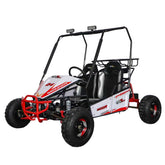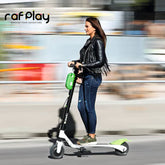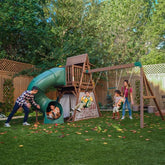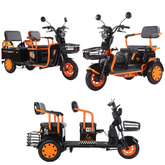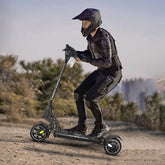Safe Travels With Your Little Ones | Top Car Safety Tips For UAE Parents
Traveling with young children requires extra care and attention, especially regarding car safety. Ensuring your child is safely secured in a vehicle can significantly reduce the risk of injury in accidents. Here are some essential car safety tips for UAE parents to remember when hitting the road with their little ones.
Choose the Right Car Seat
The foundation of car safety for children is selecting the appropriate car seat. In the UAE, children under four must be secured in a car seat. There are different types of car seats designed to suit children of various ages and sizes:
- Infant Car Seats: Designed for newborns and babies up to 1 year old or 9-13 kg. These seats should always be rear-facing to protect the baby's head, neck, and spine.
- Convertible Car Seats: These can be adjusted from a rear-facing seat for infants With a forward-facing seat for Kids and toddlers up to 18 kg.
- Booster Seats:
- Children who have outgrown their forward-facing car seat but are still too small to use the car's seat belt alone, usually between 18 and 36 kg or up to 12 years old.
Proper Installation is Key
Installing the car seat correctly is crucial. According to studies, many car seats need to be installed correctly, which can compromise their effectiveness. Here are some tips for proper installation:
- Read the Manual: Both the car seat manual and your vehicle's owner manual provide vital instructions for installation.
- Use the LATCH System: Most modern cars are installed with The Lower Anchors and Tethers for Children, which makes installation more accessible and more secure.
- Check for Stability: Once installed, the car seat should not move more than an inch side-to-side and front-to-back. Ensure that the seat is tightly secured.
Rear-Facing as Long as Possible
Safety experts recommend keeping your child in a rear-facing car seat for as long as possible, up to the age of 2, or until they reach their seat's maximum height and weight limit. Rear-facing seats provide better support for the child's head, neck, and spine in a collision.
Use the Harness Correctly
- A properly adjusted harness is essential for your child's safety:
- Position the Harness Straps: For rear-facing seats, the straps should be at or below your child's shoulders and at or above the shoulders for forward-facing seats.
- Chest Clip Placement: The chest clip Would be at armpit level to keep the harness straps in the correct position.
- Tighten the Straps: The straps should be snug enough that you cannot pinch any excess material at the child's shoulder.
Avoid Common Mistakes
Parents often make common mistakes that can reduce the effectiveness of a car seat. Here are some to avoid:
- Bulky Clothing: Please Avoid dressing your child in bulky clothing or coats while in the car seat, as it can prevent the harness from fitting correctly.
- Using Second-Hand Car Seats: If possible, only use second-hand car seats if you know their history and they meet current safety standards.
- Leaving Children Unattended: Never leave your child unattended in a car, even temporarily. The interior of a car can heat up quickly, leading to heatstroke.
Regularly Check for Recalls
Manufacturers may recall car seats due to safety defects. Regularly check for recalls on the seat you are using. You can register your car seat with the manufacturer to receive updates directly.
Set a Good Example
Children learn by watching their parents. Always wear your seatbelt, and Please follow traffic rules to set a good example for your children. This ensures your safety and instills good habits in your young ones.
Conclusion
Ensuring your child's safety while traveling by car requires vigilance and adherence to safety guidelines. Choosing the right and Best car seat, installing it correctly, and avoiding common mistakes can significantly enhance your child's safety on the road. Remember, every journey counts; these steps can make all these difference in protecting your little ones.


